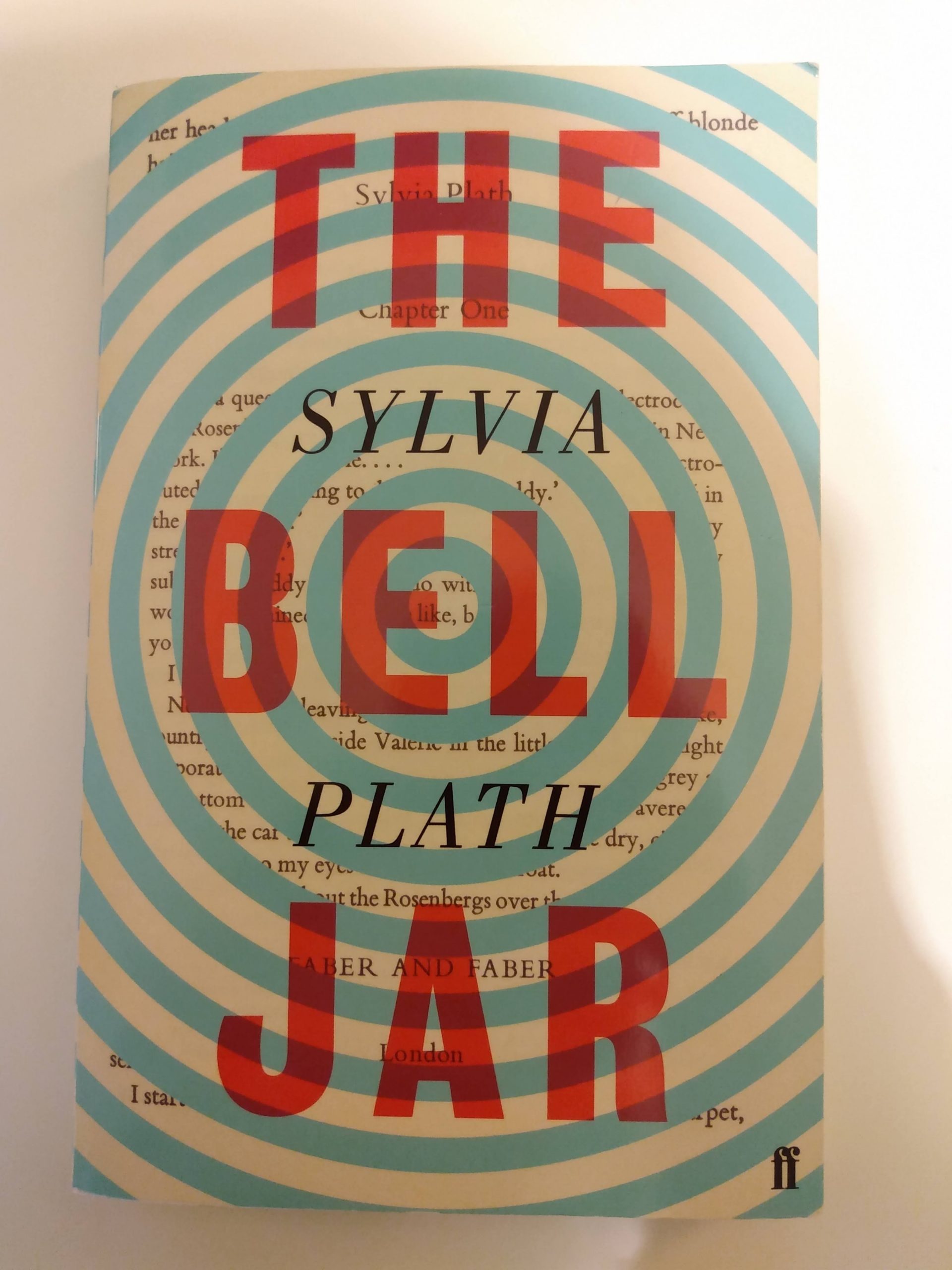The Bell Jar, by Sylvia Plath
My friends warned me that this one was a bit of a 'depressing' read. I decided to read it anyway, partly (I admit) out of stubbornness, to prove that I would not be overwhelmed by its gloom, but predominantly because I felt this was a book I needed to have read.
I concur that it is rather bleak, but while it does seem to be just one unfortunate event after another, I don't think 'depressing' quite does it justice. I feel like the word 'depressing' has lost its strength over time, and is now used in an offhand way to describe anything vaguely glum. But there was more to The Bell Jar than this.

I've been trying to pin down what exactly it is about The Bell Jar that makes it so harrowing, and I think I've worked out what it is, or certainly one option of what it might be.
The story is about a young lady called Esther living in New York in the summer of 1953. She is an intern for a fashion magazine, and a prosperous and happy future is within her grasp, but it is evident from early in the novel (and becomes increasingly obvious) that she is really struggling with her mental health. The picture Plath paints is of a woman suffering from depression, in a society that a) probably had a hand in causing the depression, and b) doesn't really understand how to help her.
Obviously the content is inherently upsetting, but what exacerbates this is that it's painfully realistic. I've read quite a few books that make a point about society, and they all do it in different ways. Some create a dystopian world that draws on elements of a familiar society, but in an exaggerated way. Some create microcosms - small domestic set-ups that symbolise the wider landscape. Some satirise, by painting a heightened and ridiculous version of the world we live in. What Plath does is hold a mirror up to reality; I think that what she has written here is probably a pretty accurate portrayal of life in 1950s New York. It's horrible, and it's real.
It is also known that Plath struggled with her mental health; she attempted suicide multiple times in her life and eventually succeeded. The story of Esther Greenwood is ominously reflective of this, almost autobiographical.
This isn't to say that there is no symbolism. I think a lot of the situations Plath has constructed do work on a metaphorical level as well as literally. For example, in one of the early chapters, Esther becomes ill after eating poisoned crabmeat at a social function - the idea of being obliged to consume toxins seems to me to be a wider societal comment, linking in to how society feeds people damaging ideals.
This theme is also inherent in the setting - the offices of a fashion magazine. It's the perfect choice to expose societal expectations of women (yes, ample opportunity for a bit of feminist criticism here...), expectations that Esther finds it difficult to fulfil. She's worried because she doesn't have a boyfriend, because she hasn't got onto her dream writing course, because her depression makes her different - I think a fashion magazine is just the epitome of adhering to social norms and gender expectations, which just makes Esther's whole situation even worse.
Of course, it mustn't be forgotten that the title itself is a metaphor. It's a good one as well. Esther feels as though she is living underneath a bell jar, and this works for me on a number of levels. Firstly, it creates a sense of being trapped and stifled, which certainly arises in the book. Secondly, living under a jar would change the way you see the world, the curved glass warping the view. This seems like a fair reflection of Esther's position - she lives in the same world as everyone else, but can't help seeing it differently. It also evokes the idea of being isolated and detached from reality, which one imagines would be the case in a place where the 'insane' are locked up in mental asylums. (This reminds me of 'Waving Through a Window' from the musical Dear Evan Hansen, a very similar metaphor for anxiety.) Finally, a bell jar is transparent, or perhaps the better word is invisible. Esther's torment is hidden deep down inside, which is partly why it is so misunderstood.
Overall, I can't really say I enjoyed this book. But I honestly don't think I was supposed to.

I’ve just finished reading the book. I felt the same, nice review!
Thank you for reading my review Ekin!